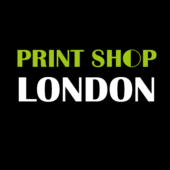Understanding Litho Printing: The Art and Science Behind High-Quality Printing
Litho printing, also known as offset printing, is a widely used printing technique known for its ability to produce high-quality, consistent results. This traditional method has stood the test of time and remains a popular choice for various printing projects, from magazines and brochures to packaging and stationery. In this article, we’ll delve into the intricacies of litho printing, exploring its process, advantages, and applications.
The Litho Printing Process:
Litho printing relies on the principle of offset lithography, which involves transferring ink from a printing plate to a rubber blanket before finally onto the printing surface, typically paper. Here’s a simplified overview of the litho printing process:
- Prepress Preparation: The process begins with preparing the artwork, typically using computer software. The artwork is then transferred onto a printing plate, usually made of aluminum, through a photographic process.
- Plate Production: The printing plate is then mounted onto a cylinder on the printing press. Each plate represents one color in the final printed piece.
- Ink Application: Ink is applied to the printing plate, where it adheres to the image areas while being repelled by the non-image areas.
- Transfer to Blanket: The inked image is then transferred from the plate to a rubber blanket cylinder. This transfer allows for a smooth and consistent ink application onto the printing surface.
- Printing: The rubber blanket cylinder comes into contact with the paper or other printing substrate, transferring the inked image onto it.
- Finishing: After printing, the printed sheets may undergo additional processes such as cutting, folding, and binding before being finalized as the end product.
Advantages of Litho Printing:
- High-Quality Results: Litho printing offers crisp, clean, and detailed prints with vibrant colors and sharp images, making it ideal for projects that demand superior print quality.
- Versatility: Litho printing can be used on various paper stocks and substrates, including coated and uncoated papers, cardstock, and even plastics.
- Cost-Effectiveness: Despite the initial setup costs involved in creating printing plates, litho printing becomes more cost-effective for large print runs due to its efficiency and speed.
- Consistency: With proper calibration and maintenance, litho printing delivers consistent results across multiple print runs, ensuring uniformity in color and print quality.
Applications of Litho Printing:
Litho printing finds applications across various industries and sectors, including:
- Commercial Printing: Magazines, catalogs, brochures, and promotional materials.
- Packaging: Folding cartons, labels, and flexible packaging.
- Stationery: Business cards, letterheads, envelopes, and invitations.
- Art Prints: Limited edition prints, posters, and reproductions.
Conclusion:
Litho printing remains a cornerstone of the printing industry, valued for its exceptional print quality, versatility, and consistency. Despite the rise of digital printing technologies, litho printing continues to thrive, particularly for projects that demand high-quality results and large print runs. By understanding the process, advantages, and applications of litho printing, businesses and individuals can make informed decisions when selecting the most suitable printing method for their projects.
